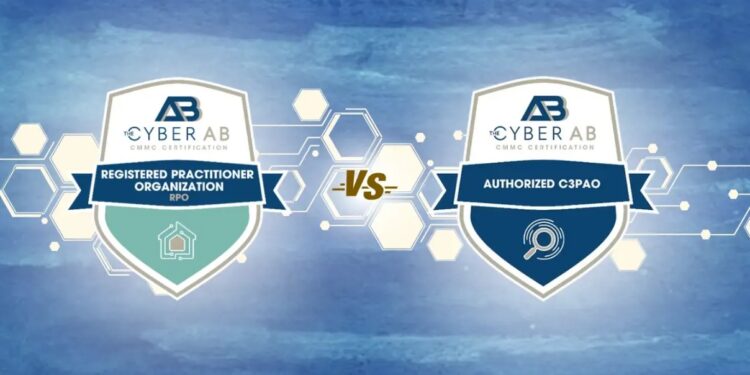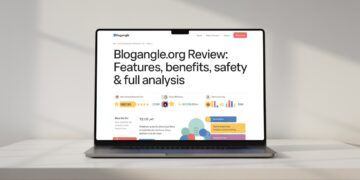Post Preview
Cyber threats don’t knock before they enter. They slip quietly into places where security looks strong on the surface but cracks underneath. That’s where the role of a C3PAO becomes less about checklists and more about keeping the federal supply chain truly secure.
Independent Validation of Cyber Posture for Defense Contractors
A C3PAO plays the part of an unbiased watchdog. They step in to independently confirm whether a defense contractor’s cybersecurity practices actually hold up under pressure. Meeting CMMC compliance requirements, especially for CMMC level 2 requirements, goes beyond basic security hygiene—it demands verified action. Without a third-party validator, it’s easy for contractors to overestimate their readiness.
This independent review carries weight. Contractors might believe their tools and protocols are solid, but a C3PAO reveals what’s truly in place. Their job isn’t just to check boxes—it’s to ensure that security controls are doing what they’re supposed to. Without this oversight, CMMC assessments risk becoming just paperwork, not protection.
Risk Quantification Beyond Standard Compliance Checklists
A checklist doesn’t show you what’s at stake—it only shows you what’s been done. C3PAOs are trained to dig deeper than surface-level requirements. They evaluate the potential impact of gaps and help contractors see risk not just in numbers but in consequences. This matters more than ever for those chasing CMMC level 1 requirements and especially CMMC level 2 requirements.
This approach transforms assessments into meaningful reports. Contractors come away not only knowing if they pass or fail, but understanding how vulnerabilities could affect their government partnerships. The value of a C3PAO lies in this insight—making federal cybersecurity less about meeting a list and more about understanding the weight of each risk.
Integrity Assurance Through Rigorous Data Controls Auditing
In defense contracts, data isn’t just information—it’s potential national exposure. A C3PAO audits how data moves, who touches it, and whether controls actually hold. These audits are more intense than standard internal checks. They focus on the trustworthiness of systems guarding Controlled Unclassified Information (CUI), a key piece of any CMMC assessment.
Their reviews highlight the difference between assumed safety and tested security. If a contractor claims encryption is in place, the C3PAO will confirm how and where it works. This protects not just the client but the larger federal data ecosystem. Achieving CMMC compliance requirements means proving that these safeguards aren’t just present—they’re performing.
Confidentiality Reinforcement in Complex Federal Supply Chains
Federal supply chains are layered, tangled, and full of opportunity for data to leak or be mishandled. C3PAOs strengthen confidentiality by mapping and verifying how data confidentiality is preserved at every level. They help ensure that subcontractors—often overlooked—don’t become weak spots. This is especially vital for contractors handling projects that fall under CMMC level 2 requirements.
C3PAOs bring clarity to complex systems. They ask the hard questions about who has access and how that access is monitored. Their findings help contractors not only meet compliance but tighten up operations. It’s a safeguard that supports national defense efforts far beyond just one organization.
Accountability Enforcement Across Defense Contracting Entities
Without outside accountability, it’s easy for gaps to go unnoticed. C3PAOs make sure that security isn’t just talked about—it’s documented and enforced. Their role holds contractors responsible for both the state of their systems and their ability to maintain them. CMMC compliance requirements rely on this outside check to ensure that standards are being met in real life, not just on paper.
This enforcement creates a ripple effect across contracting entities. Once one part of the chain is held to a higher standard, others follow. C3PAOs drive this upward movement, creating a baseline of trust between contractors and federal agencies. That kind of enforced accountability changes how cybersecurity is handled long term.
Regulatory Alignment with Emerging Federal Security Protocols
C3PAOs stay in step with evolving federal expectations. As cybersecurity regulations shift and tighten, C3PAOs help contractors adjust. Their work isn’t just to check the present—it’s to prepare organizations for future expectations tied to CMMC assessments. They interpret the changes, guide action, and validate progress toward new compliance goals.
They act like a compass in a landscape that shifts often. What passed last year might not pass tomorrow. Contractors leaning on a C3PAO get more than just approval—they gain direction in aligning with ongoing changes. This insight is especially important for staying compliant as CMMC level 1 and level 2 requirements continue to evolve.
Assurance of Cyber Resilience Through Thorough Third-Party Scrutiny
Resilience isn’t about having zero problems—it’s about recovering fast and limiting damage. C3PAOs don’t just assess whether systems are secure—they assess whether those systems can bounce back. Through real testing and scenario reviews, they pressure-test a contractor’s ability to stand strong in the face of an attack. That’s a critical part of any CMMC assessment.
Defense contractors benefit from this third-party lens. It shifts the conversation from “Are we compliant?” to “Are we resilient enough to continue operations under fire?” C3PAOs offer that perspective. In the high-stakes world of federal contracts, that assurance isn’t a bonus—it’s a necessity.


















